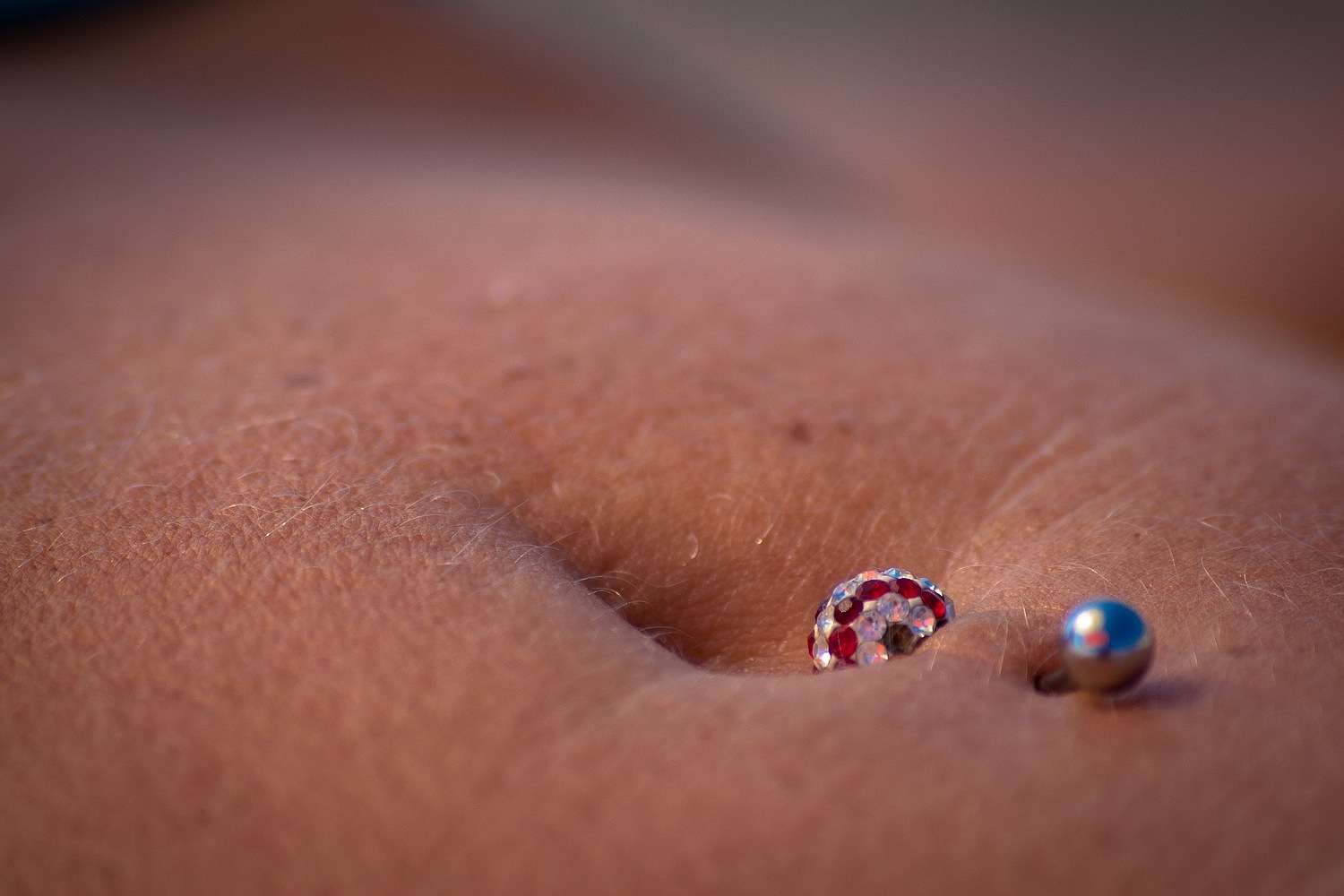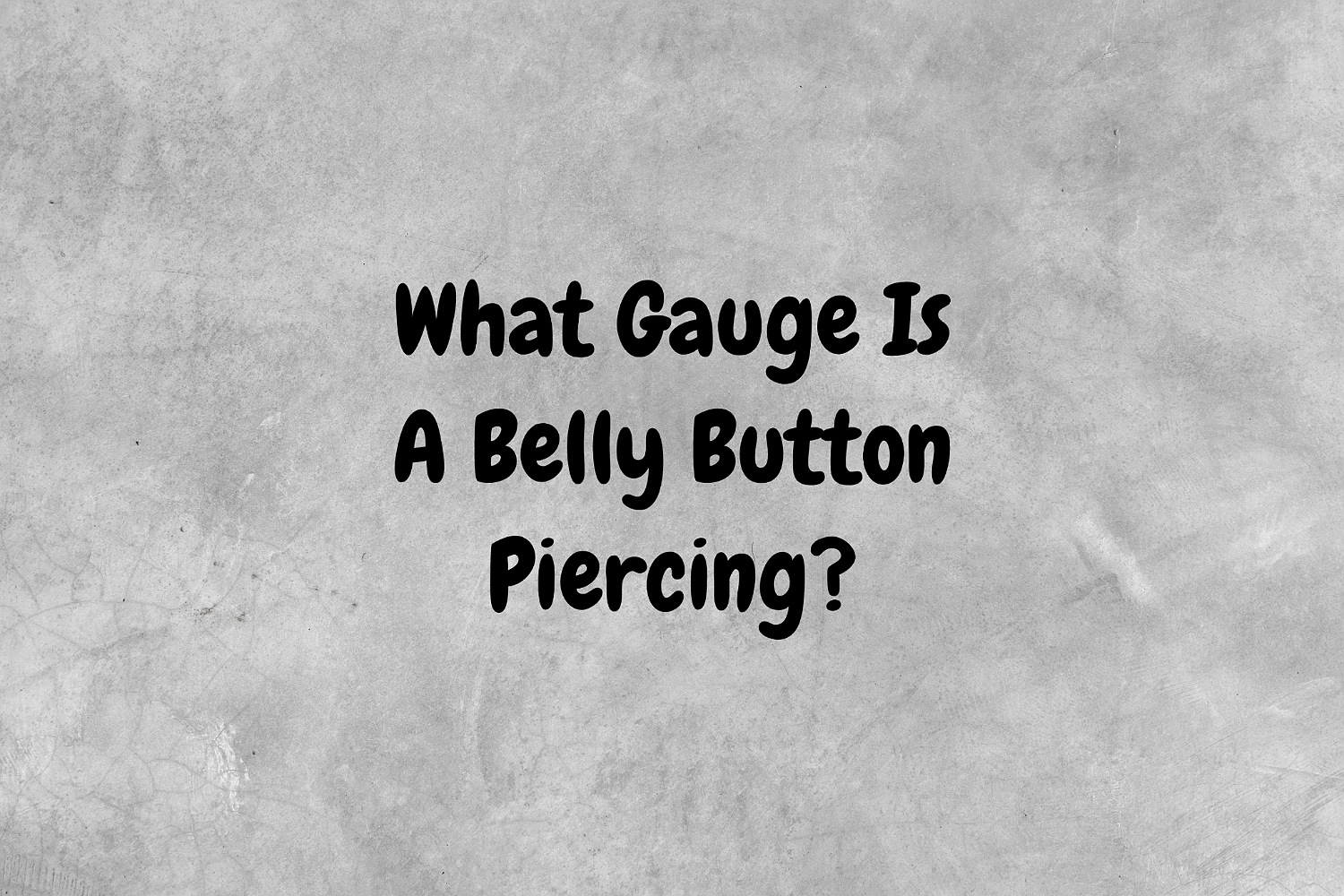Join The Piercing Ya Newsletter
What Gauge Is A Belly Button Piercing?
Want a belly button piercing but you have the burning question, “What gauge is a belly button piercing?” Well let’s discuss it.
The belly button piercing, a timeless symbol of self-expression, has adorned bodies for centuries. But for those wondering if they should take the plunge, navigating the world of piercing sizes can be daunting. The most crucial element? Understanding the gauge size, which refers to the thickness of the jewelry used.
The Standard Gauge Of A Belly Button Piercing
When it comes to belly button piercings, the 14 gauge reigns supreme. This size is considered the industry standard for initial piercings by professional piercers. Here’s why it takes the top spot:
- Safety: A 14 gauge provides a good balance between being thick enough for proper healing and thin enough to minimize initial discomfort.
- Comfort: The moderate thickness allows for easier insertion and reduces the risk of tearing during the healing process.
- Jewelry Availability: The vast majority of belly button jewelry is manufactured in 14 gauge, ensuring a wide selection of styles and materials to suit your taste.
- Aesthetics: This gauge offers a visually pleasing balance, not appearing too bulky or too delicate for most navel anatomies.
Important Note: It’s crucial to get pierced with the correct gauge by a reputable professional. This minimizes the risk of complications like migration, rejection, and infection. Never attempt a self-piercing, as it can lead to serious health risks.
Want a nipple piercing too? Discover the gauge of a nipple piercing.
Exploring Other Gauge Options
While 14 gauge is the gold standard, there are other gauge sizes available, each catering to specific preferences and anatomy:
- 16 Gauge: This thinner gauge might be suitable for those with very sensitive skin or delicate navels. However, it’s less common and may have a limited selection of jewelry available.
- 12 Gauge (and Larger): These gauges are considered larger and are typically used for stretching existing piercings. Stretching should only be done gradually and under the supervision of a professional piercer to avoid tearing or damage.
- Custom Gauges: In rare cases, a piercer might recommend a custom gauge based on your unique anatomy. They will assess your navel depth and recommend the best size for proper placement and healing.
Choosing the Right Gauge Size
Before making a decision, consider these factors:
- Navel Anatomy: A professional piercer will assess your navel depth and advise on the most suitable gauge size. They can also check for any anatomical anomalies that might influence the piercing.
- Sensitivity: If you have very sensitive skin, a thinner gauge like 16g might be a better initial option. However, consult your piercer for guidance based on your specific sensitivity level.
- Healing: A standard 14g size generally promotes optimal healing. If you plan to stretch in the future, discuss this with your piercer beforehand.
- Jewelry Preference: While 14g offers the widest selection, explore available options in different gauge sizes if desired.
Remember: Choosing the right gauge size is a crucial step in ensuring a smooth and successful piercing experience.
Beyond the Gauge Of The Belly Button Piercing
While gauge size plays a significant role, other factors contribute to a positive piercing experience:
- Material: Opt for implant grade titanium, surgical steel, or high-quality gold for initial piercings. These materials minimize the risk of allergic reactions.
- Aftercare: Following a diligent aftercare routine recommended by your piercer is vital for optimal healing. This typically includes cleaning the piercing regularly with a saline solution and avoiding harsh soaps or irritants.
- Lifestyle: Be mindful of activities that might snag or irritate the piercing during the healing process. Consider loose-fitting clothing and avoiding strenuous exercise.

In A Nutshell…
Understanding belly button piercing gauge sizes is an essential step towards a safe and successful body modification experience. By prioritizing the standard 14 gauge for initial piercings and consulting with a professional piercer, you can embark on your body art journey with confidence. Remember, proper aftercare and choosing the right materials are equally crucial for a smooth healing process. So, take the plunge, embrace self-expression, and let your belly button shine!
Would you like to read further about belly button piercings? If so, check out our in depth article about everything belly piercings: Belly Piercings. Also, see other questions that people ask about belly button piercings: Belly Button Piercing FAQ.
Need to find a piercer? Check out the Association of Professional Piercers.


